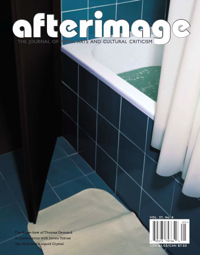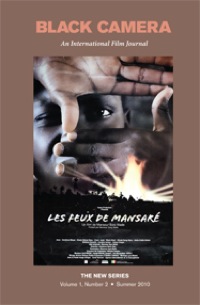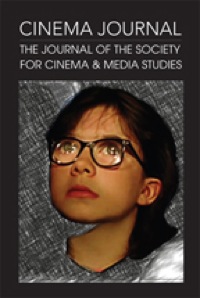Books
» ‘Journals’
 Afterimage: The Journal of Media Art & Cultural Criticism
Afterimage: The Journal of Media Art & Cultural Criticism
Vol. 37, no. 6
Asian Film Archive at Five
Patricia R. Zimmermann describes the work of the Asian Film Archive in Singapore, which opened in 2005 to collect films from Singapore and independent, non-studio produced works not archived elsewhere in Southeast Asia. She relates that the AFA has collected more than 1500 titles from Indonesia, Malaysia, the Philippines, Singapore, Vietnam, and elsewhere.
n
d
Black Camera
Vol. 1, no. 2, Summer 2010
News from the Black Film Center Archives
Updates on BFCA in its new home at Indiana University Bloomington.
Black Camera
Vol. 1, no. 1, Winter 2009
Out of the Archive: Challenges and Opportunities for New Scholarly Access from Old Media Collections
The abundance of primary moving-image source material, coupled with technological developments, offers “the promise of transforming old media formats for use in new and exciting forms research, education, and scholarly communication,” writes David Rowntree, project manager at Henry K. Giugni Digital Archives at the University of Hawaii and president at Archival Media Consulting. With reference to the Film & Media Archive at Washington University, where he previously worked, and which emphasize the African American political and social experience, he outlines the roles that archives can play in creating new kinds of scholarship.
Cinema Journal
Vol. 49, no. 1, Fall 2009
Undesirable Bodies and Desirable Labor: Documenting the Globalization and Digitization of Transnational American Dreams in Indian Call Centers
By considering films that portray Indian call centers, Dale Hudson, a visiting assistant professor of film studies at Amherst College, analyzes the way documentary films may shore up or disrupt notions of the “American dream.”
Cinema Journal
Vol. 49, no. 3, Spring 2010
The Archive and Academia
Haden Guest, direcor of the Harvard Film Archive, describes the last decade’s emergence of motion-picture archiving as a professional and academic field. It has seen, he says, the emergence of specialized degree programs in the United States that have not only graduated motion-picture-archive professionals, but has also galvanized interest in the career of film archiving. So much so, he says, that graduate students now consider MIA a “cool” profession. Happily, he adds, most applicants have undergraduate degrees in film studies and an interest in media history, along with a desire to do something practical with those. But he reminds readers that MIA graduate programs are not the only way into the profession: Another, for students interested in film programming, archive direction, and collection development and management, is “the dedicated, patient work of a doctoral candidate – and specifically the development, research, and writing of a dissertation” in a related field.
Cinema Journal
Vol. 49, no. 3, Spring 2010
Challenges and Opportunities for Mid-Career Administration
E. Ann Kaplan, distinguished professor of English and comparative literary and cultural studies at Stony Brook University, writes that more academics in media-related fields would do well to take on the responsibilities of administrative positions, whether to help maintain a department or to “build something that is not already in place.” While often hesitant to tackle such roles, academics often find that they can find senior colleagues willing to teach the ropes, and the roles offers such benefits as gaining influence with deans and provosts.
Cinema Journal
Vol. 49, no. 3, Spring 2010
Feminist Commitment and Feminized Service: Nonprofits and Journals
Patricia White, a professor of film and media studies at Swarthmore College, advocates for a sort of ad hoc professional development that she has pursued alongside her academic career: participation in independent feminist and LGBTQ media distribution and exhibition through nonprofit-organization board membership. That kind of work, she writes, “has been crucial to my pedagogy and scholarship, and I try to invest whatever cultural capital I’ve accrued as an academic back into the organizations that have sustained me. Many questions that press on us in the humanities—new technologies and distribution systems, digital rights, arts funding, globalization—affect media arts organizations in interlocking ways, and the structures particular to each institution can support the other.”
Cinema Journal
Vol. 49, no. 3, Spring 2010
DVD Supplements: A Commentary on Commentaries
Giorgio Bertellini, director of graduate studies in screen arts & cultures at the University of Michigan, and Jacqueline Reich, associate professor of Italian and comparative literature at Stonybrook University, describe the popularization of DVD editions with audio and print supplements since Criterion Collection introduced them in 1984 for a niche market of laser-disc buyers. The supplemented editions, they note, are geared to varying levels of cinephilic and commercial consumption, with added directors’ cuts, deleted scenes, making-of documentaries, exclusive or vintage interviews with filmmakers and celebrated critics, video essays, professional biographies, photographic essays, and specially written essays (modeled after record-industry liner notes).


